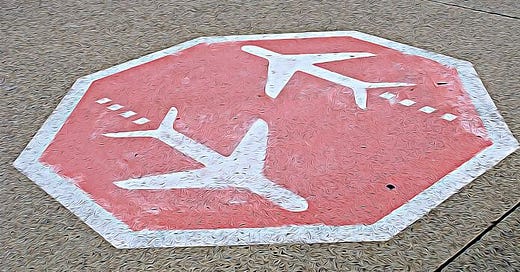I. OODA Loop
The Observe, Orient, Decide, Act (OODA) Loop is a mental model to help us act more quickly when facing an adversary in a fast-paced and disorienting situation. Originally used for quicker decision-making in warfare, it describes a perpetual cycle:
Observe: Both, our counterpart and us attempt to collect as much accurate information as possible about what’s happening on the battlefield.
Orient: Participants engage in analysis and sensemaking about what has been observed.
Decide: The information that was collected and analysed is used to consider options for action, hypothesizing their potential impact.
Act: A decision is implemented. As its impact changes the dynamic on the battlefield, the loop starts from the beginning.
The OODA Loop was developed by U.S. Air Force fighter pilot John Boyd in the 1950s. It has since seen widespread application outside in sports, business and self-defence. The goal is to cycle through our own loop as quickly as possible, while ‘getting inside’ and disrupting that of our competitor.
II. On Collision Course
In case you’re interested, I’ve written in more detail about the OODA Loop. In the essay, I relate the following urban legend about ego and hubris when it comes to situational awareness:
A battleship is on a collision course with what appears to be a small naval vessel on their radar. Over the radio, the navy commander orders the other party to change course as his ship was clearly more significant and powerful.
The other party refuses to comply suggesting instead that the officer brings his ship about. The battleship captain insists to stay on course in no uncertain terms. But the other party does not back down, eventually declaring: “We're a lighthouse. Your call.”
III. Being Prepared
There’s a trope in parachuting that can be applied to any life (and death) situation. The question is this: If your main parachute fails, how much time do you have to open your reserve chute?
The answer comes tongue-in-cheek: For the rest of your life. It illustrates the importance of training, practice and preparation to be able to think and act quickly in fast-paced and potentially dangerous situations. In other words, situational awareness can be learned.
On a similar note, I’ve also written about the downsides of taking mental shortcuts. Check it out if you haven’t already. 🐘
Have a great week,
Chris
themindcollection.com




